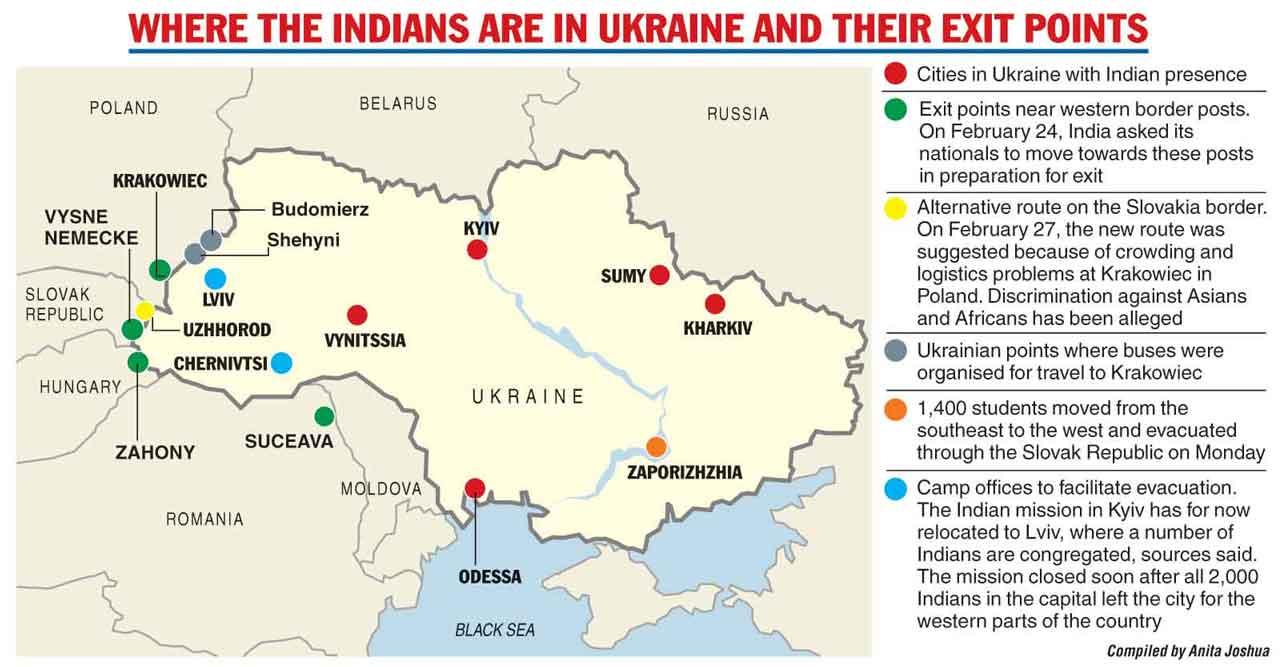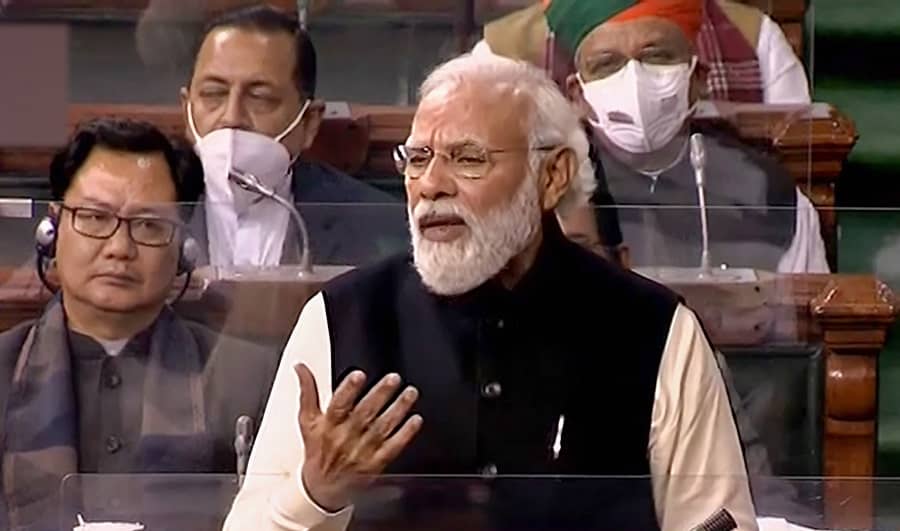The Narendra Modi government has not condemned the Russian attack on Ukraine, six days into the invasion. But no sooner had Naveen Shekharappa Gyanagouda been killed in Russian shelling in Ukraine on Tuesday than a campaign started on social media blaming the young medical student.
A section of government-friendly news channels amplified the campaign by accusing students in Ukraine and their parents of not taking seriously multiple advisories from the Indian embassy to leave.
The campaign blaming Naveen has come at a time the Modi government has been criticised for delaying the evacuation and issuing confusing advisories through the embassy in Kyiv.
After Naveen’s death, a Twitter user named Pradhan Gaurav wrote: “21-year old Navin from Karnataka’s Haveri district comes under the attack of shells at Ukraine. It is a loss to the family. But the question is, since Feb 15 till yesterday, why he was ignoring 6 advisories from the Indian government. Was he waiting for a private jet to bring him back or any special invitation from PM?”
Similar messages were tweeted by the handles Devout Saffron, Anil Kumar, Yetendra and Mbharat. Some tagged the external affairs ministry.

On February 24, Indian foreign secretary Harsh Vardhan Shringla had said on record what other officials had been indicating: “One important step that we’ve taken because a number of our students were reluctant to leave because the university authorities had said the classes must be offline. We have now persuaded all the universities and institutions to allow online classes and therefore, students can actually leave without having to face the strain of not being able to or missing out on their classes.”
On Tuesday, when AltNews founder Mohammed Zubair flagged some of the tweets blaming the students, actress Swara Bhasker replied: “Indian RW (Right wing) Twitter is literally the most nauseating thing on this planet.”
Two Indians who were among a group of 50 students who crossed over to Romania on Tuesday after waiting for two days on the Ukraine border in -2 degrees Celsius expressed anger at the social media drive and said they had been largely left on their own.
Dharmesh Koirala, who hails from Muzaffarpur in Bihar, said stranded students had been left in the lurch by the Indian embassy, which did not guide them properly.
“Several countries like the US, Germany and Belgium had evacuated their citizens by February 7. The Indian embassy, on the other hand, did not issue any advisory till February 15. That advisory was also very confusing as it said citizens whose stay was not essential could leave. Many students were attending offline classes in colleges and universities. How could they leave?” Koirala said.
“The embassy gave a clear-cut advisory to leave on February 20. But there were not enough flights. The Russian invasion began on February 24. It is not that the students waited without caring for the advice. The embassy did not guide the students properly,” he added.
Koirala, a student of Taras Shevchenko University in Kyiv, said: “The government claims it is providing all help. When we left Kyiv two days ago, we were helped by Ukrainians. There was no help from the government. The embassy asked us to stay where we were. When the local people are leaving despite having their own houses and friends here, how can we live in bunkers for days on end?”
Indian students had last week protested in front of the embassy in Kyiv, demanding shelter.
Muhammad Tabish, a student of State Medical University in Poltava, said students could not be blamed under any circumstances.
“The students followed the government’s advice sincerely. But for food and other stuff, they have to come out of their bunkers or underground Metro stations where they are taking shelter. Can they live without food?” he asked.
Foreign secretary Shringla has said India started the registration of Indian nationals in Ukraine about a month ago. “Our embassy anticipated the need to connect and be in contact with all Indian students in Ukraine. Based on the online registration process that was conducted by our embassy, we found that there were close to 20,000 Indian nationals, including students, in Ukraine. Of these, about 4,000 have since left the country.”
Shringla had said a number of measures were taken to facilitate flights out of the country. “These include the removal of the cap on the number of passengers that could fly out of Ukraine that was imposed by the civil aviation authorities of both countries. There was a 440-number that could fly out every week, that cap was removed. We also ensured that the number of flights were augmented rapidly, from about twice a week to about two flights a day, and that enabled us to get at least 4,000 of our citizens and students out. We should also remember that there were a number of other options available through flights through Dubai and Istanbul and other places from Kyiv.”
Nazeerul Ameen, president of the All India Foreign Medical Graduates Association, an organisation fighting for transparency in the Foreign Medical Graduates Examination, said students must not be blamed.
“Correct advisory was not given on time. Why should the student (Naveen) be blamed?” he asked.











